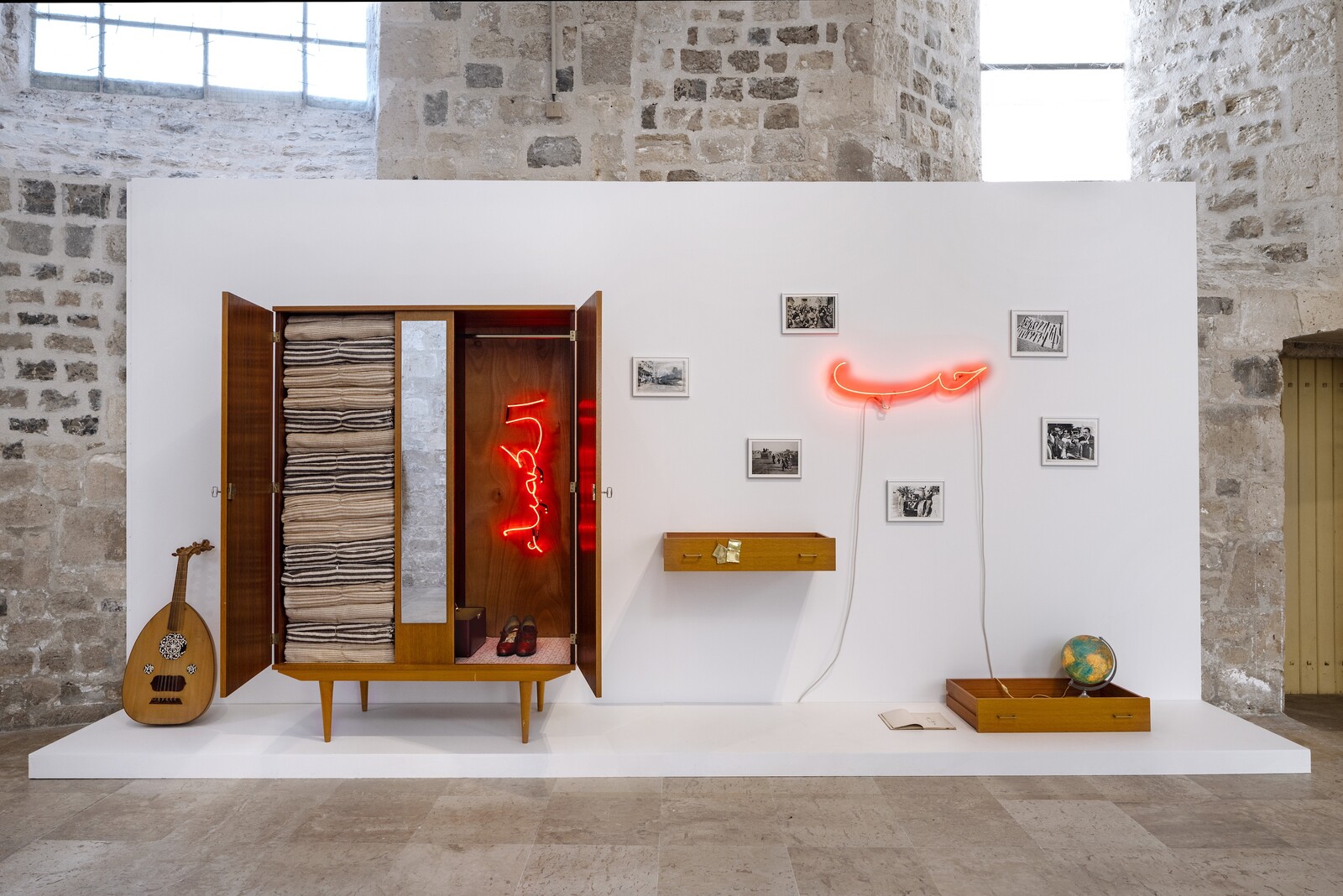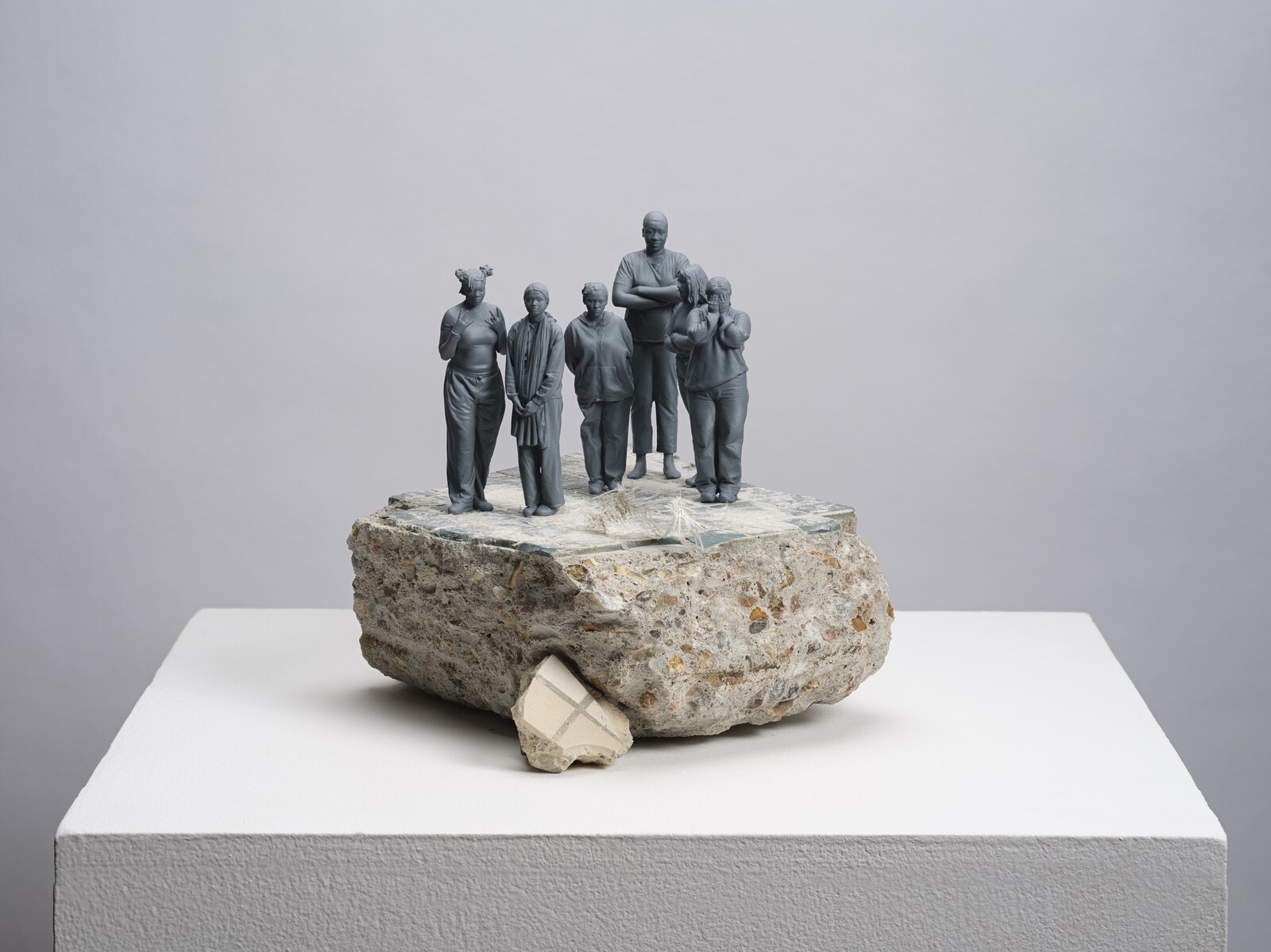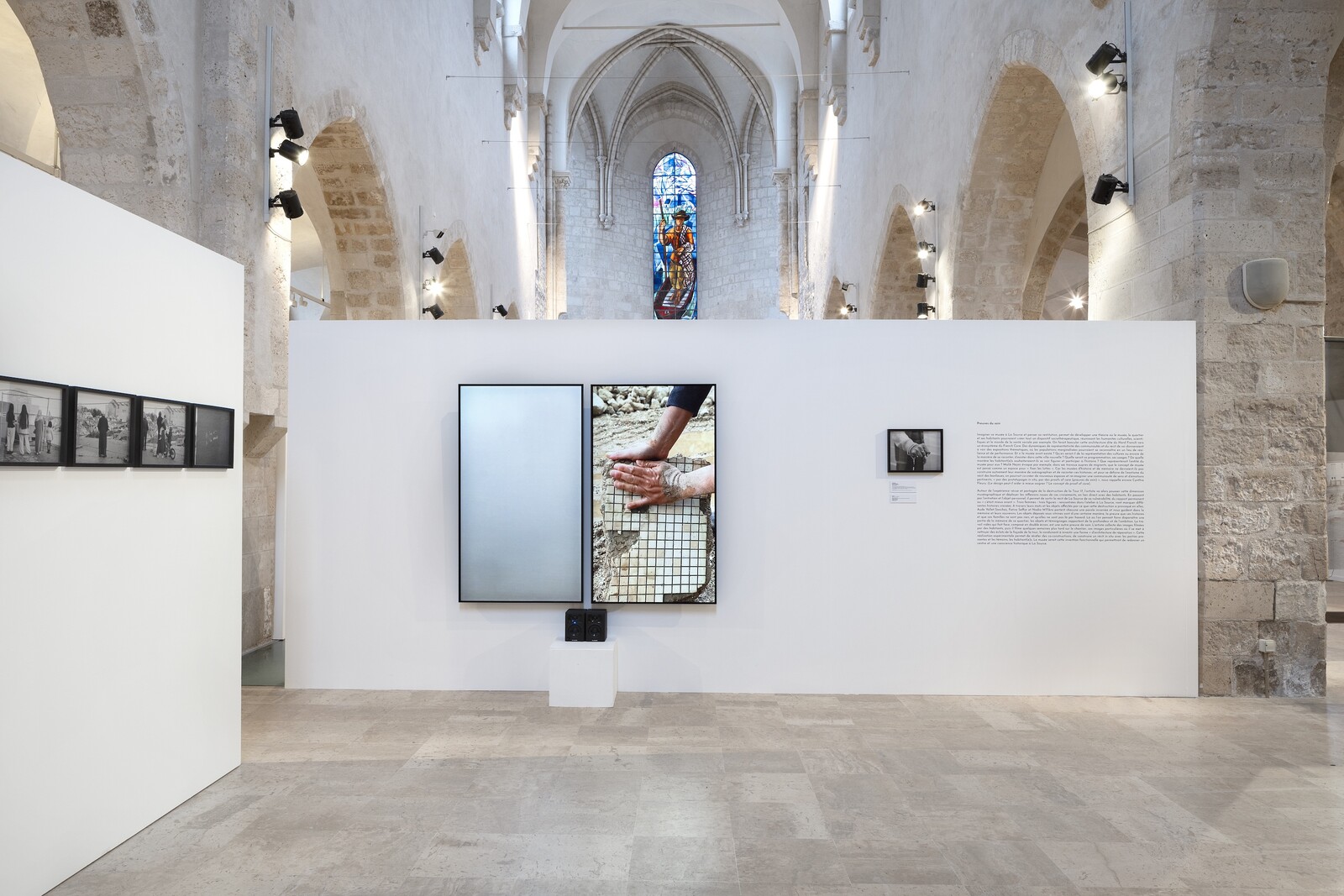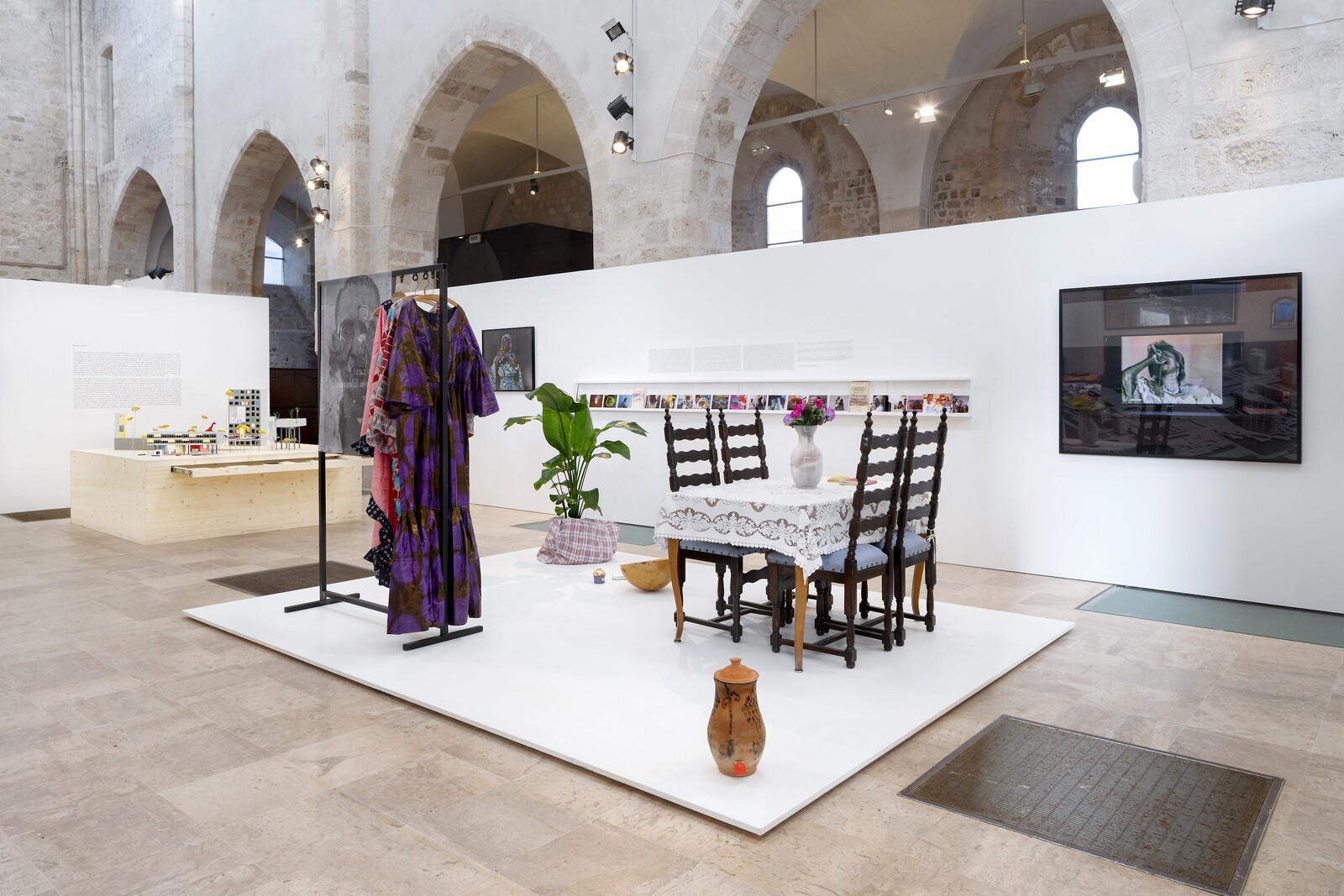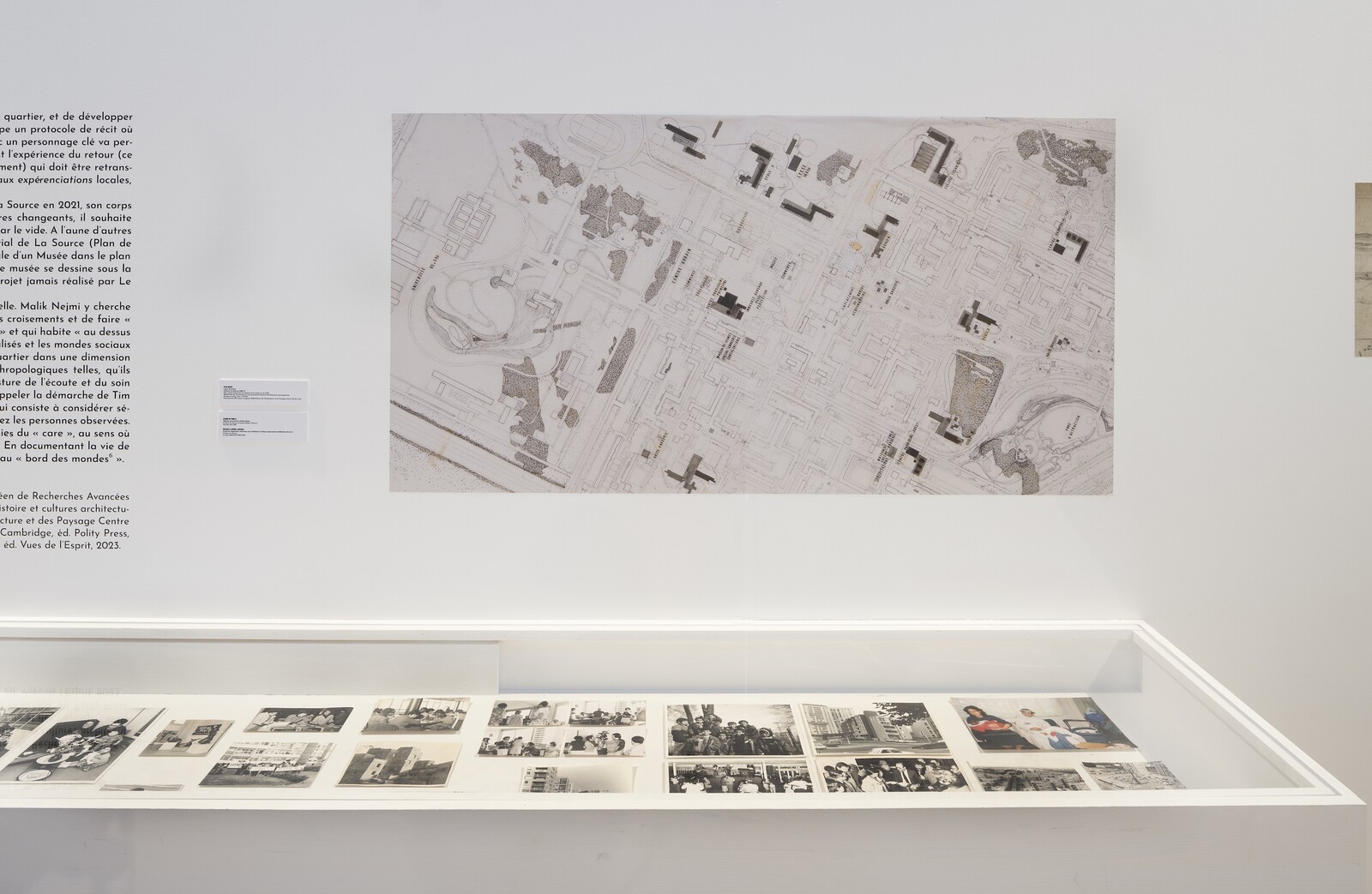Malik Nejmi’s ambitious retrospective, co-curated with Louise Bras and presented in a deconsecrated twelfth-century church, poses a fundamental question: can architecture be a tool for collective and individual care? At the heart of this exhibition of photographs, videos, sculptures, installations, archival documents, and architectural ephemera is the neighborhood of La Source, on the outskirts of Orléans, where the Franco-Moroccan artist grew up. For more than three years, he carried out meticulous fieldwork in the area. In doing so, he combined autobiography with socio-historical research, the small story with the big picture. The planned demolition of Tower 17, an emblematic building in the area, was the catalyst for the project. Under the artist’s gaze, this disappearance becomes a symbol of a collective memory threatened with erasure.
The strength of the exhibition lies in its ability to deploy different temporalities around a single site. Before the demolition, Nejmi methodically documented the empty building through his series of large-format photographs (“Super-fenêtres,” 2024), in which the empty apartments still carry traces of past lives. A vertical orthophotograph of the façade (Orthophotographie, 2023), produced with the aid of large scanning devices, offers an overall view of the building, transforming architecture into an aesthetic subject in its own right.
Then comes the moment of destruction, which the artist also depicts, from the spectacular demolition to the building’s final erasure from the urban landscape. But it is perhaps in the aftermath that Nejmi’s artistic gesture takes on its political dimension. With the video Proof of care (2024), in direct reference to the work of the philosopher and psychoanalyst Cynthia Fleury—co-editor of 2022’s Soutenir, an influential book on architecture, cities, and care—the artist collects fragments of the destroyed building, cleans and exhibits them (the “Tenir le terrain” series, 2023–24), thereby bestowing on them the mixed status of artworks and witnesses.1 This gesture of caring for the ruins of a fallen architecture echoes the recent theories of sociologists Jérôme Denis and David Pontille on maintenance as “the art of making things last.”2 To care for material remains is to care for the memories they carry.
The exhibition revolves around a bold theoretical proposition: the transformation of the modernist architecture of large housing estates, which Nejmi describes as “hard French,” into a “French care ecosystem.” One of the conceptual starting points for the project was the unexpected discovery, in the city archives, of a master plan for the construction of a museum at La Source that was never realized. Nejmi uses this absence, this ghost museum, to imagine what could have been a space dedicated to the memory of the inhabitants of working-class neighborhoods. He draws a striking parallel with Le Corbusier’s Mundaneum, a project for a center of world culture conceived for Geneva in the late 1920s and never built. This printed document is the centerpiece of a section of the exhibition entitled “Mondaneum Studio,” revealing an intellectual kinship that anchors his work in the history of architectural utopias.
This ephemeral “world museum” brings together photographs, installations, architectural plans, models, portraits, and objects from Nejmi and the residents’ daily lives: a constellation of diasporic knowledge. In this section of the exhibition, the artist documents his encounter with a woman who says she “heals the neighborhood” using magic and rituals. For him, she embodies the possibility of an “architecture of repair” that would soothe not only the ills of urban space, but also the nostalgia of the children of immigrants—the “migratory blues” to which Nejmi bears personal witness. He borrows furniture from her living room, displayed like a show apartment in the exhibition.
While France already has institutions that focus on issues of migration, popular cultures, and immaterial heritage, including Le Musée national de l’histoire de l’immigration in Paris and Mucem in Marseille, Nejmi’s proposal stands out for its therapeutic and field-work approach, which makes it feel as if the works have emerged from the territory. He doesn’t offer a distanced view of the neighborhood, but one from the neighborhood itself—and from multiple points of view: his own, residents’, historians’. He invites the viewer imaginatively to participate in the creation of new environments and ways of relating to one another in a physical space. For him, museums should be capable of representing every member of a given society.
At a time when debates around national identity and migrant populations are reaching a rare intensity, Nejmi’s work reaches far beyond the neighborhood in which it was created to offer a profound reflection on the role of tomorrow’s museums and what they are called to represent. This ambitious exhibition proposes that museums, places of remembrance, can be repurposed to address and even start to repair issues of importance to the local community.
Cynthia Fleury and SCAU, eds., Soutenir: Ville, architecture et soin (Paris: Éditions du Pavillon de l’Arsenal, 2022).
Jérôme Denis and David Pontille, The Care of Things: Ethics and Politics of Maintenance, trans. Andrew Brown (Cambridge, UK: Polity, 2022).
